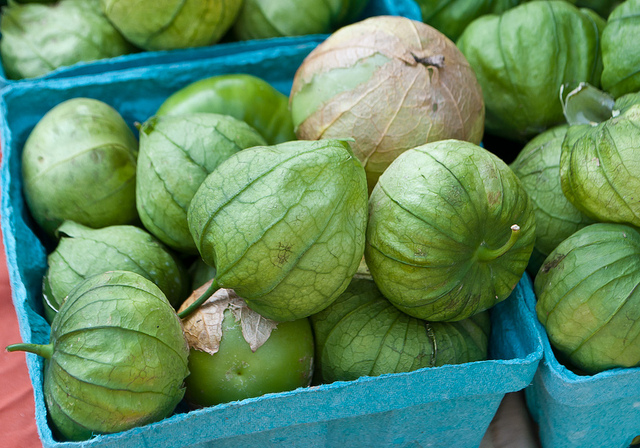(image)
Plenty of fruits and vegetables have wonderfully evocative names. Gooseberries (I pucker just saying it); bok choy (don’t you just want to slice it in the air like a Fruit Ninja?); aubergines (so sophisticated). But of all the fruit and vegetable names, none strike me as more fun than: tomatillo. Just say it! TOMATILLO. Didn’t that feel great?
Fortunately for us all, the flavor is every bit as fun as the name. Tangy and sweet, they’re the secret ingredient in all sorts of delicious Mexican foods. And see those husks? Just a little gift wrap to make tomatillos as pretty as they are flavorful. In fact, the husks appear first and then the fruit grows to fill them, something that just seems so cool to me.
Naturally, given all that there is to recommend tomatillos, I’m growing a whole bunch of them this season. You can too! Here’s what you need to know.
- Tomatillos, as you might guess from the name, are close relatives of tomatoes. They like all the same growing conditions, meaning plenty of sun, plenty of water, and doses of tomato fertilizer a few times a season.
- Like tomatoes, tomatillos spread, so don’t go thinking you can have more than one tomatillo plant per container. They’ll grow up to four feet tall, with a similar wingspan, so give each plant a nice bit pot of its own. And, once again, like tomatoes, tomatillos need support structures.
- Tomatillos take between 75 and 100 days to go from seed to salsa verde, and they’ll keep going strong, producing more fruit till the first frost hits. You can start them indoors and move them out once the cool nights are past, or you can wait and start them directly outdoors. If you aren’t growing them yet and you want to this season, your best bet is to track down an already-growing tomatillo plant at the nursery. Otherwise, you won’t get any fruit until October or so, and when the first cold October night hits, bam, you’re done.
- Harvesting! This is the fun part. Tomatillos are ready for plucking when the husk splits and/or turns from green to tan. Eat them while the fruit is still green for maximum tang. Once they turn yellow, the flavor is sweeter and a whole lot less zesty.
I can’t wait till my first crop is ready.
Tags: tomatillos
